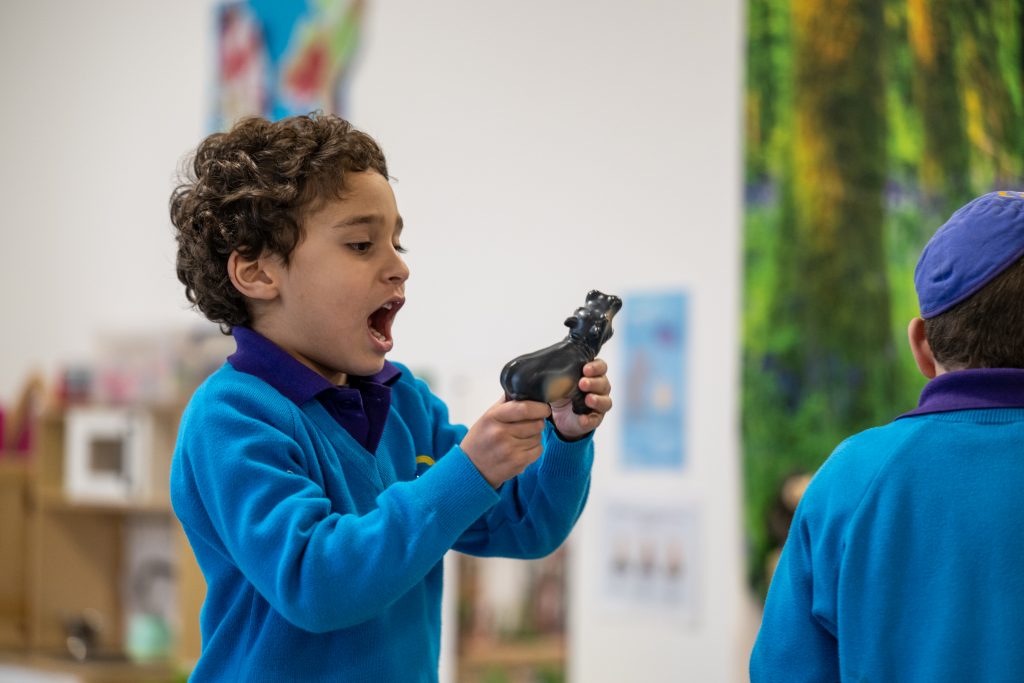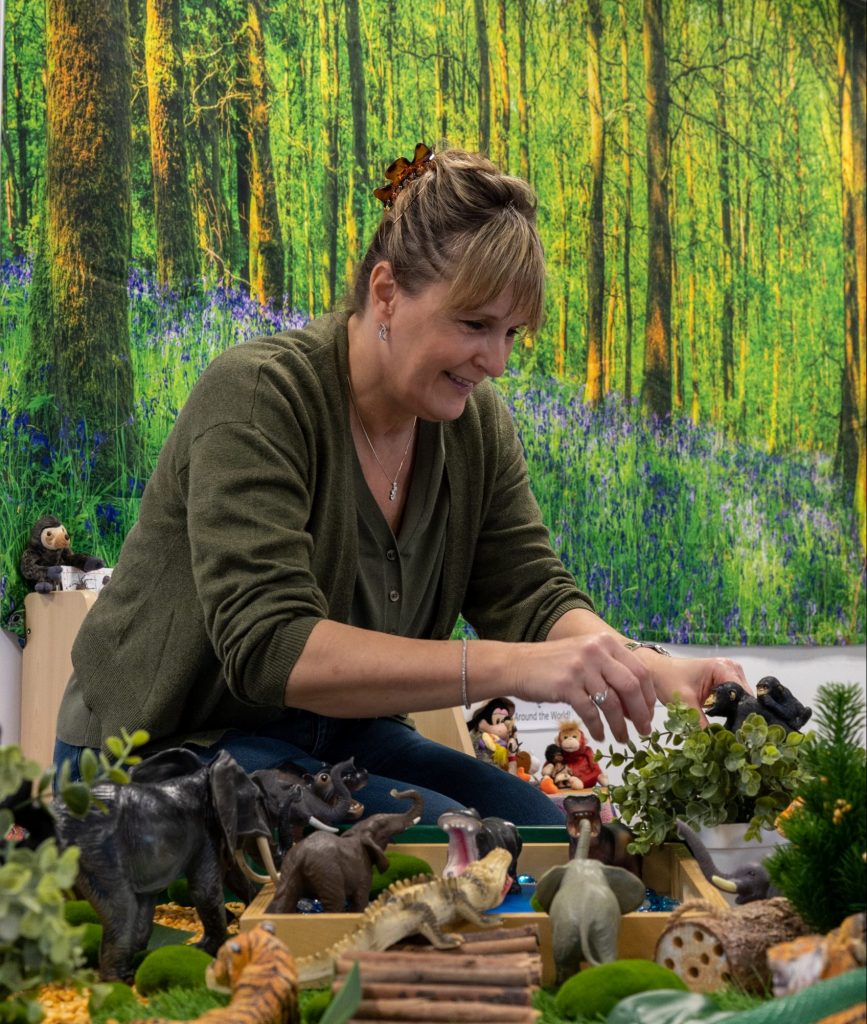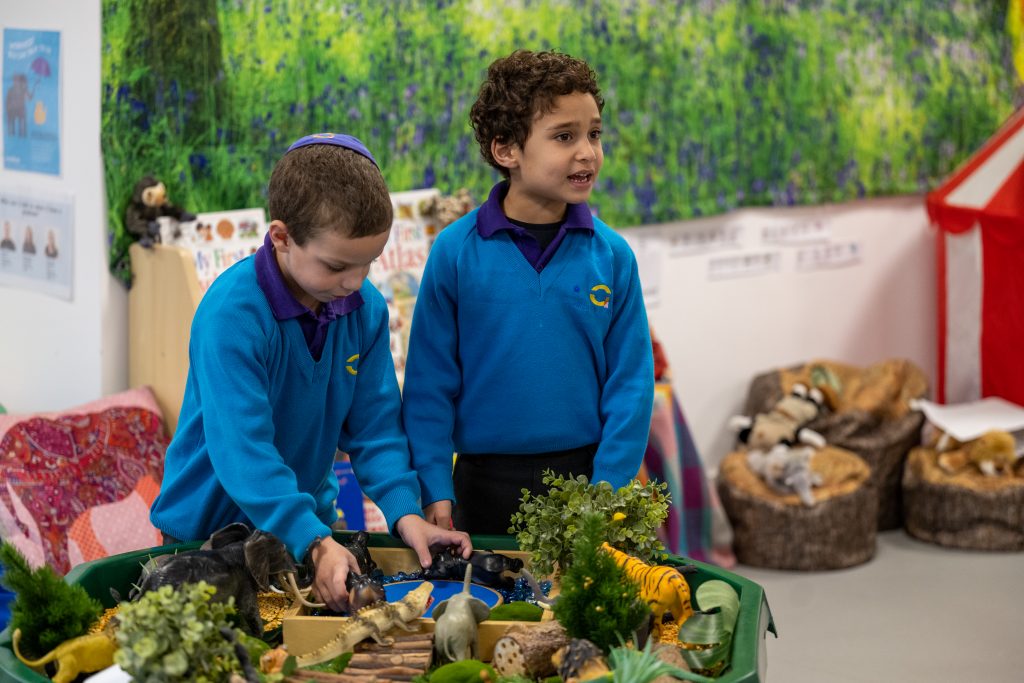Building From Passions and Interests
Sam Dexter

In the first issue of The Bridge, we introduced Gesher’s Five Design Principles. These principles were developed by members of the Gesher community, friends and supporters of Gesher, and with input from members of the wider community. They are central to everything that happens at Gesher and as such, across the next five issues of The Bridge, we will look at how they are put into practice.
For this issue, we spoke to Monique Lauder, a Teaching Assistant in the Early Years/Year 1 Class about Gesher’s second design principle; personalised learning informed by young people’s passions and interests. Monique has spent twenty-one years working in Early Years settings and joined Gesher two years ago. In that time she has developed her own approach to personalising sensory trays and tuff trays.
The decision about what to include in the trays is driven by her deep knowledge of the young people.
Sensory Trays and Tuff Trays
Sensory trays and Tuff trays are a regular feature of many Early Years and Key Stage 1 classrooms. They promote and support language development, gross and fine motor skills and support children to develop their problem-solving skills. They are typically large plastic trays filled with materials such as shredded paper, coloured rice, pasta, different types of lentils, couscous, shaving foam, or water. They also often include small-world play items or objects linked to a topic. When we sat down to chat with Monique, her latest sensory trays were full of small white stones, tweezers, and what looked to me suspiciously like old Weetabix.
… the personalisation of learning informed by young people’s passions and interests.

Planning and Creating the Personalised Trays
For Monique, the decision about what to include in the trays is driven by her deep knowledge of the young people she works with. ‘I try to get something I know will interest them, maybe someone is really into cars, so I would put cars in that tray… It’s mostly about looking at the children, seeing what they really like, asking them what they like and going from there.’
As well as knowing about the interests of the young people she works with, Monique also discussed how a young person’s individual targets feed into the personalisation of a tray. ‘A lot of our students have targets related to communication and interactions so I use the trays to encourage role-play… the students are seeing their friends or adults playing in a certain way or interacting with an object in a certain way and they’re able to do the same.’ Monique also told us how, if a student is working on a very specific target, that can be practised in the tray. For a student working on recognising numbers up to twenty, for instance, putting objects in the tray and asking students to find them, means the skill from a maths lesson can be practised throughout the day. The student’s Project-Based Learning (PBL) topic also helps Monique to decide how to personalise a tray. A PBL topic usually runs for half a term so one of the trays will also be linked to this.

Monique also shared with us how her approach to planning and setting up the trays has developed throughout her time at Gesher. ‘At first, I was doing two a week but I changed it because I felt that students needed more time to explore’. Now, Monique will change the trays once a week and this gives the students much more time to be curious and work out which different sensory experiences they like and don’t like. ‘The other thing I’m trying to do more is implement what the students are doing in the classroom into the trays.’ At this point in our chat, the young people Monique works with came charging in from the playground. After taking off their coats and putting away their bags, they headed straight for the trays filled with the white stones and Weetabix. One of them grabbed a picture of a mouth and the other immediately picked up the tweezers asking who wanted to be the first dentist to collect the teeth. Monique explained that their topic this term was healthy bodies and that specifically this week they were looking at how to keep healthy (and that I was correct, it was old Weetabix).
Monique’s Tips for Creating a Personalised Sensory Tray
Ideas
The vast majority of Monique’s ideas come from knowing the young people she works with really well, so her biggest piece of advice is to take time to build relationships with the young people. Once you’ve done this you can start including personalised objects in the sensory tray and build the process up from there. Knowledge of a young person’s targets and next steps will also ensure the tray can be further personalised to their needs, as can a broad awareness of the curriculum experiences they are having.
Resources
Monique told us how most of her resources come from things she would have usually recycled, like food containers and packaging, as well as natural materials from the garden like leaves, conkers and acorns. A store of these materials can be built up relatively quickly, especially if more than one person is contributing to it. The materials could then be shared between classes and reused for different topics. Finally, she said that shops like B&M, Tiger, Poundland and Wilko are great places to get inspiration (and often bargains!)
End Note
Whilst the work that Monique does is specifically related to sensory trays, this article is also about something much bigger — the personalisation of learning informed by young people’s passions and interests. The principles are the same whether it is six or seven-year-olds or much older learners — build relationships; know the learner well; involve the learner; connect to the real world; and design experiences relevant to their learning ambitions.
Professional Prompt Questions
We included this article because Monique’s sensory trays provide a highly accessible example of personalisation in practice. What is the best example in your school?
This example is built on relationships — and knowing students’ SEND needs, learning challenges and passions. Who in your school has this relationship with SEND learners?

